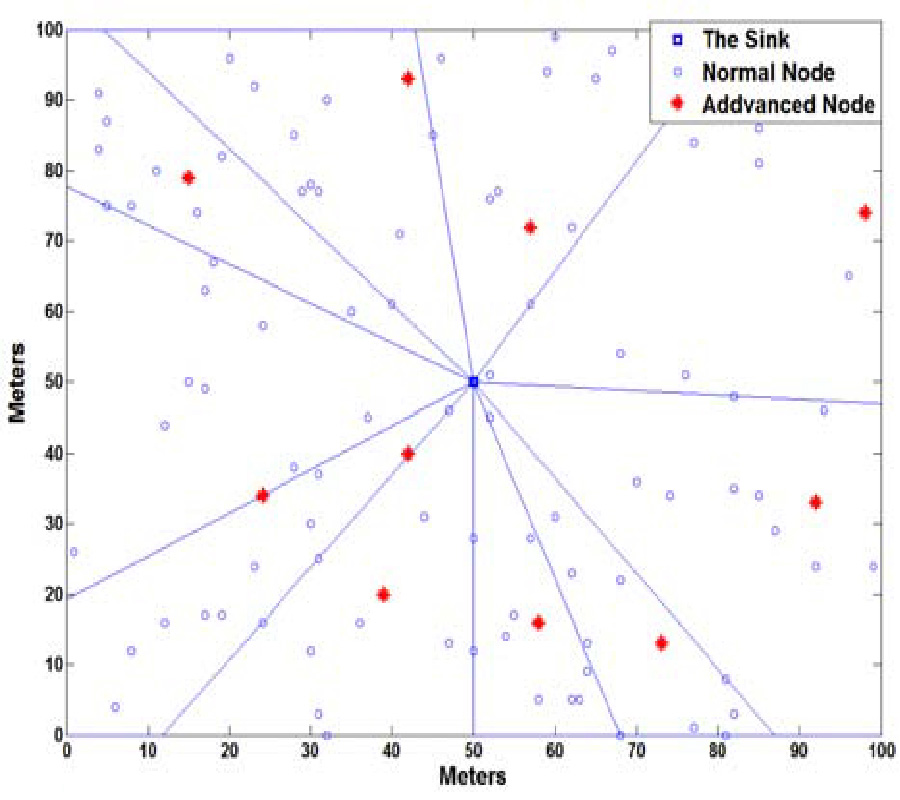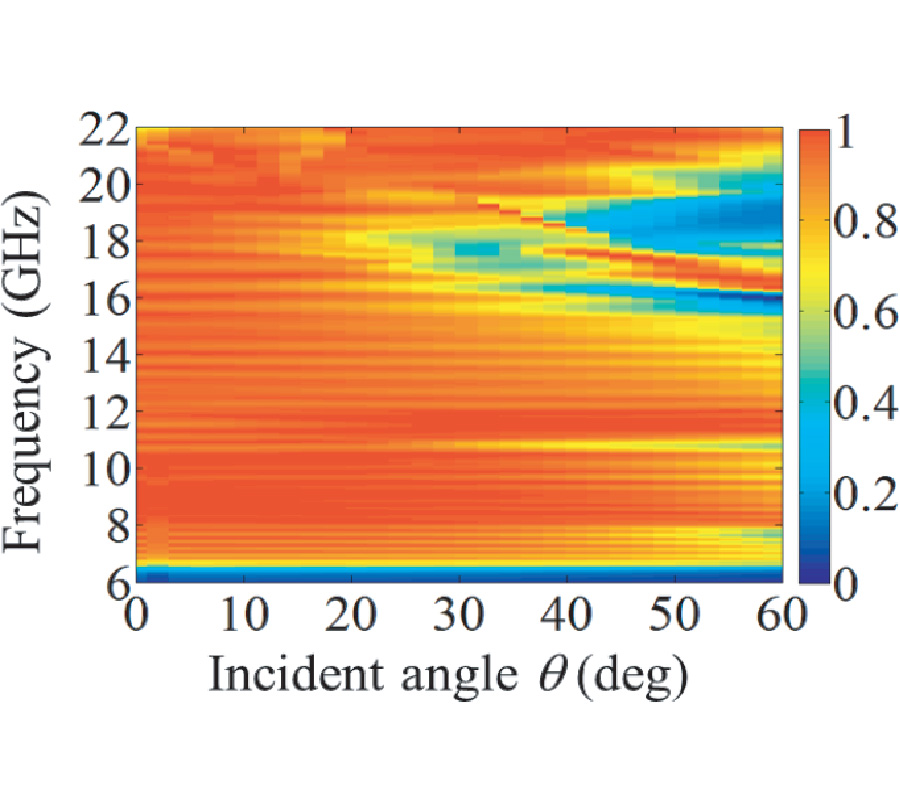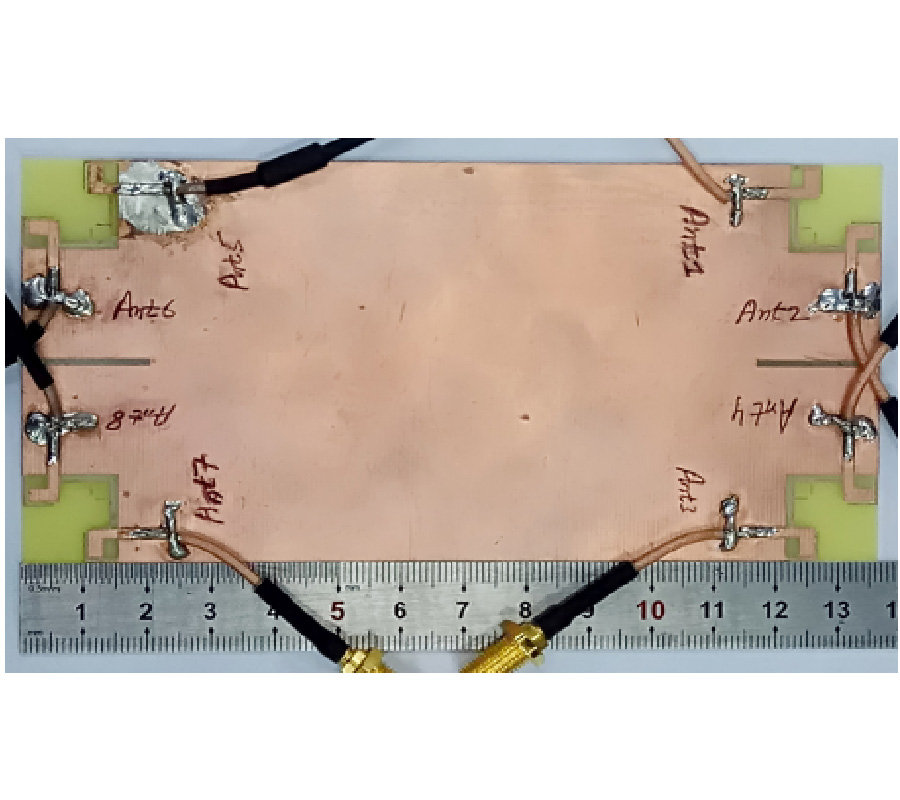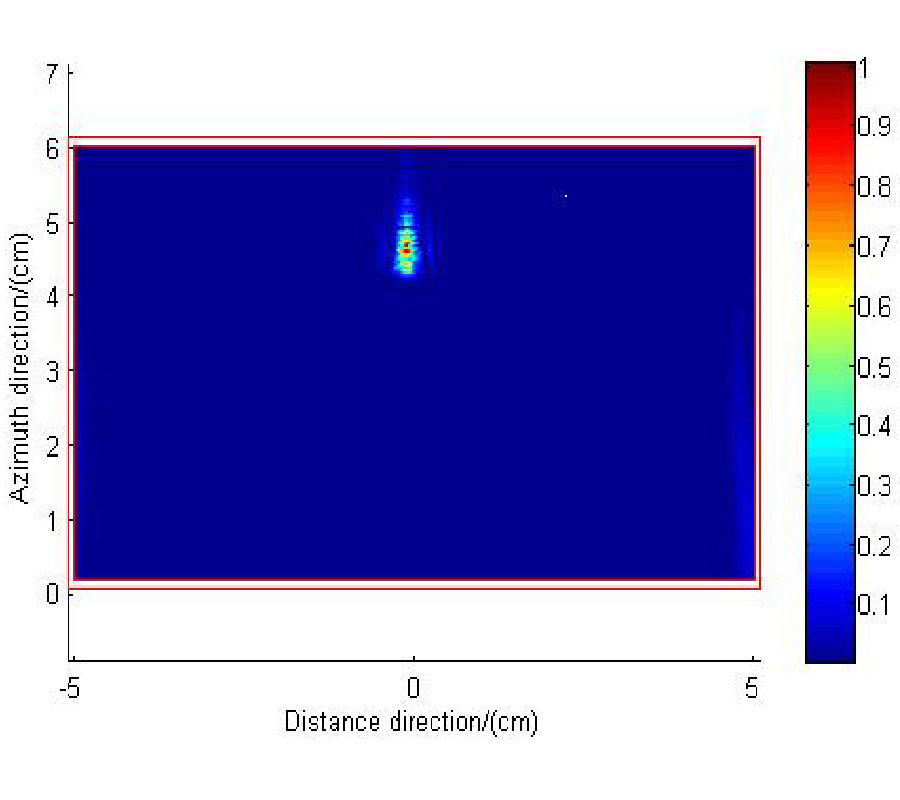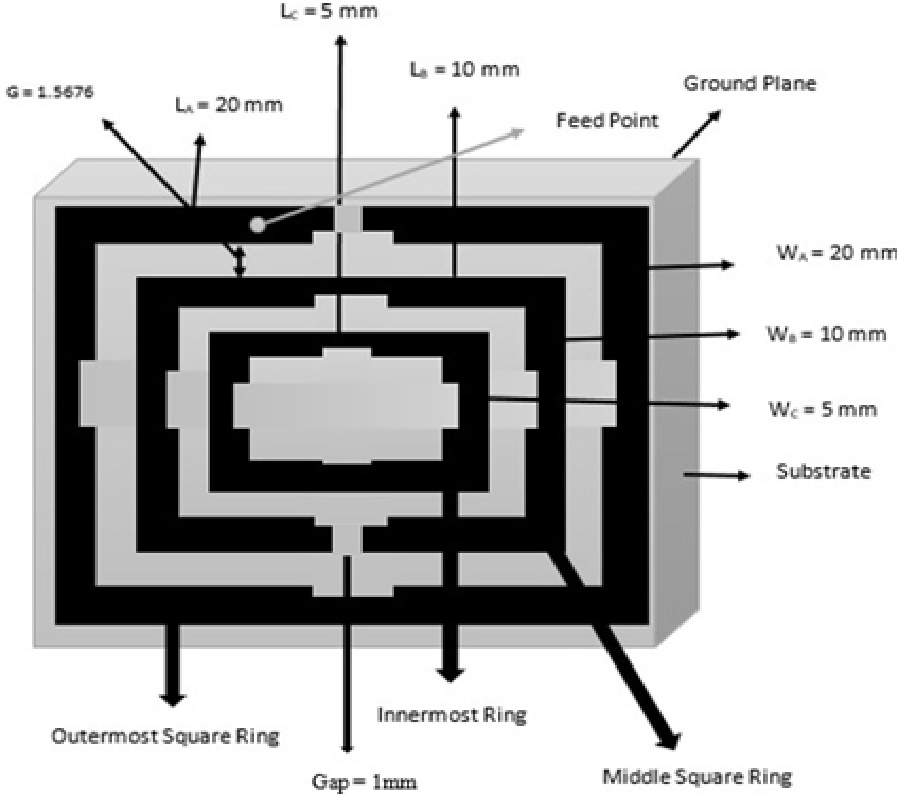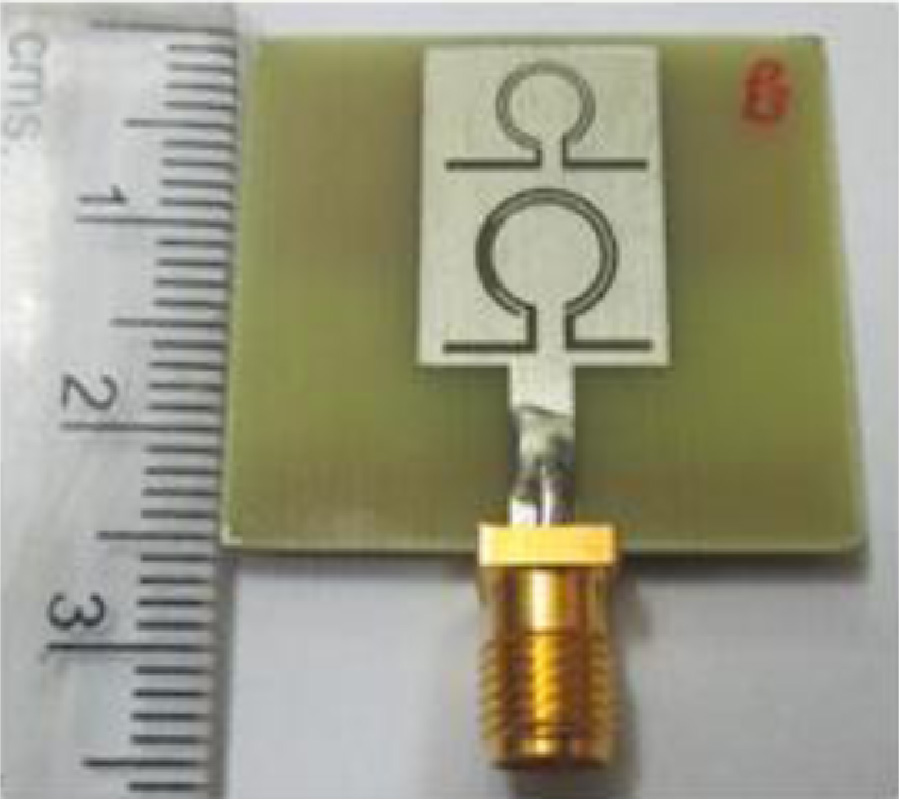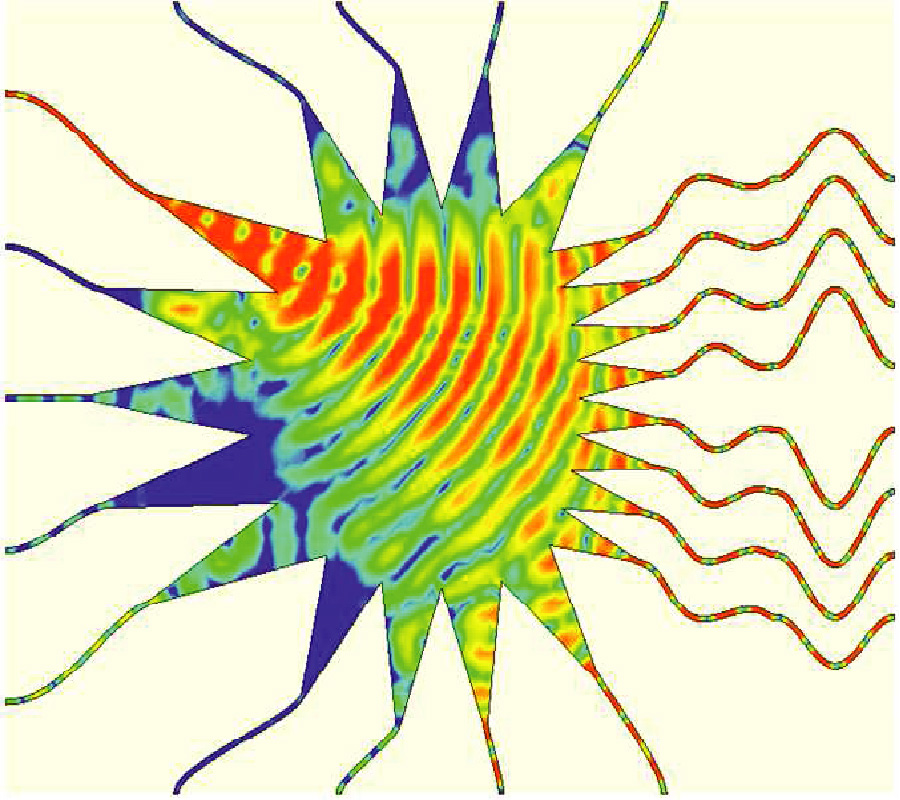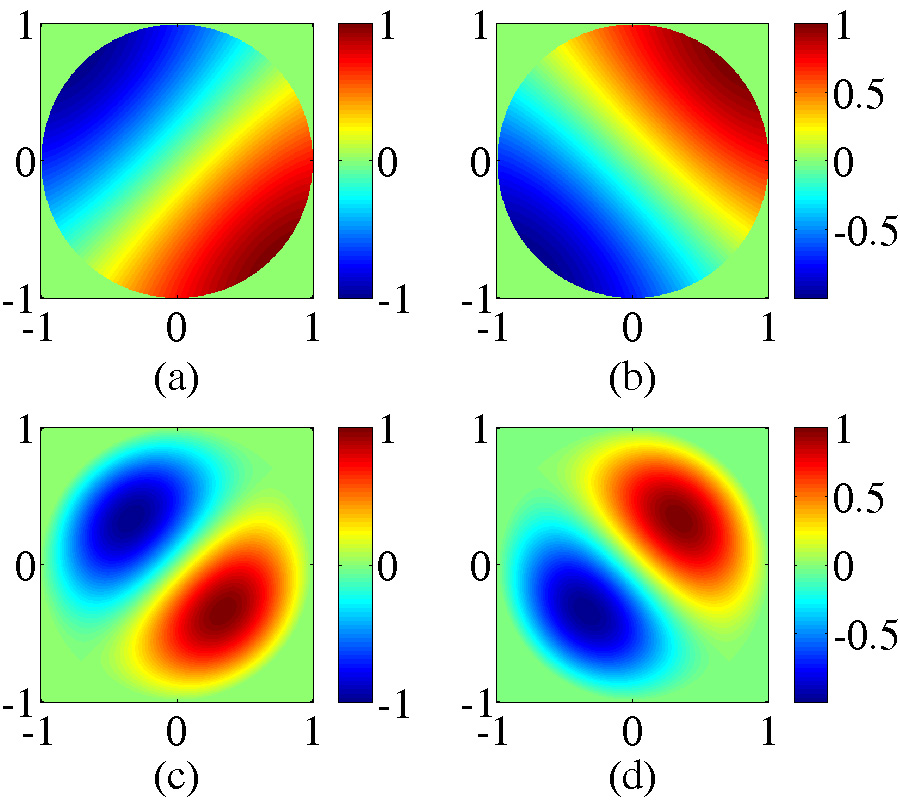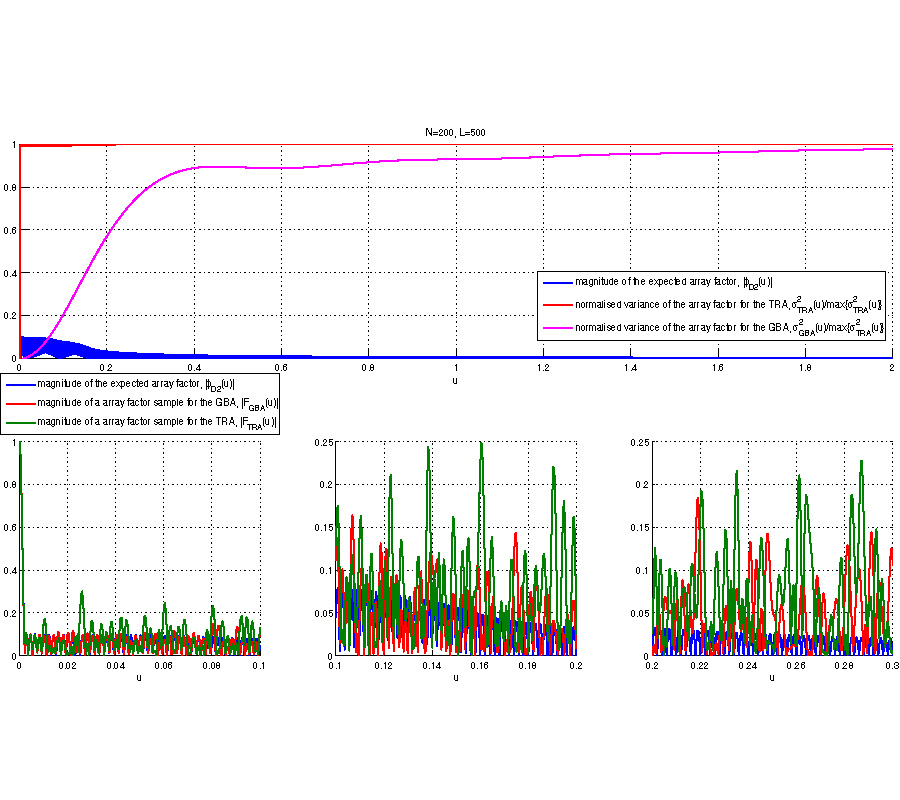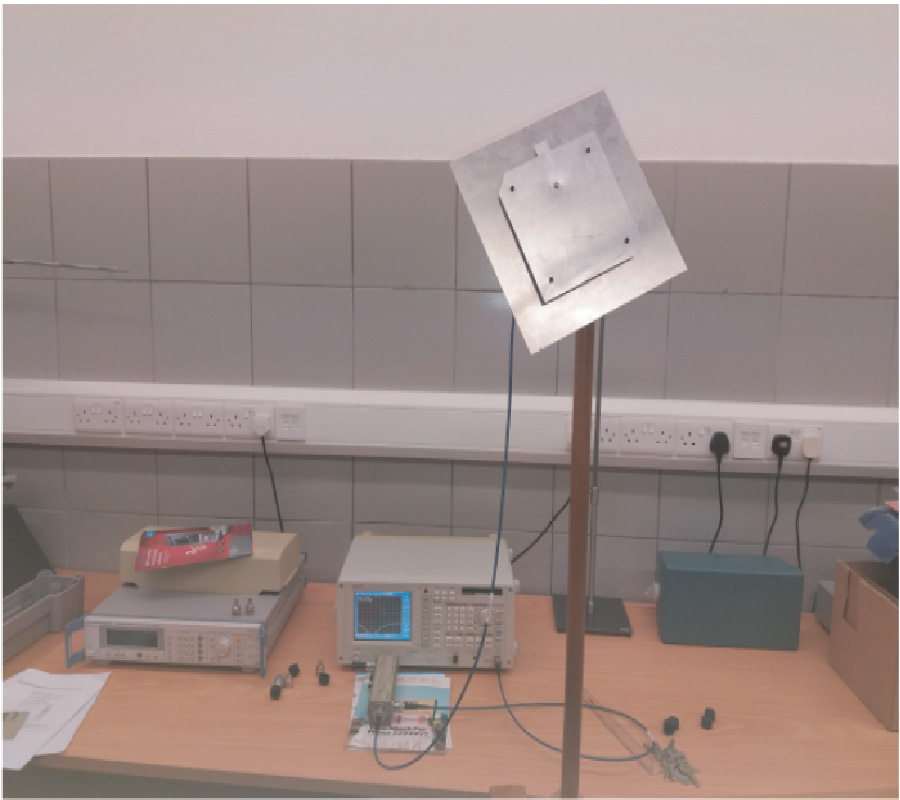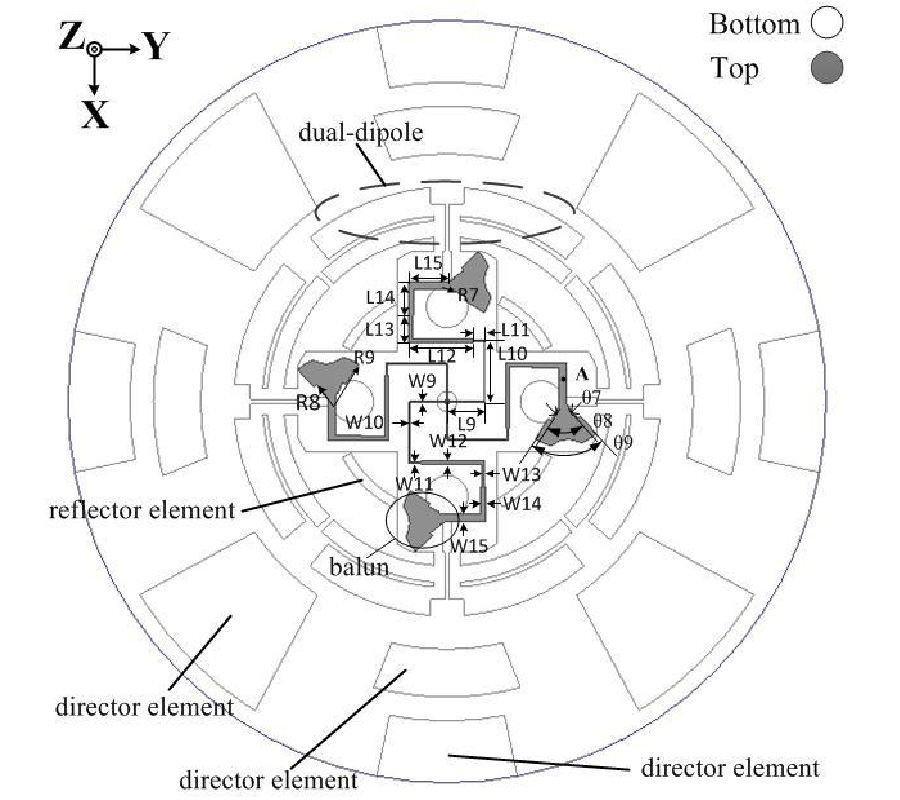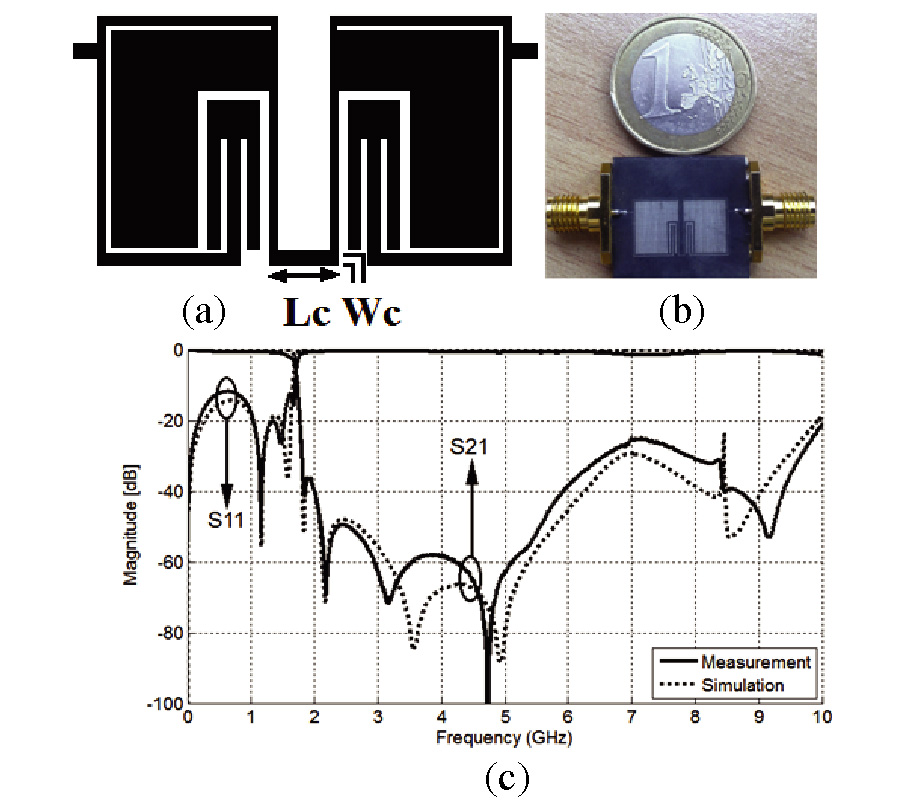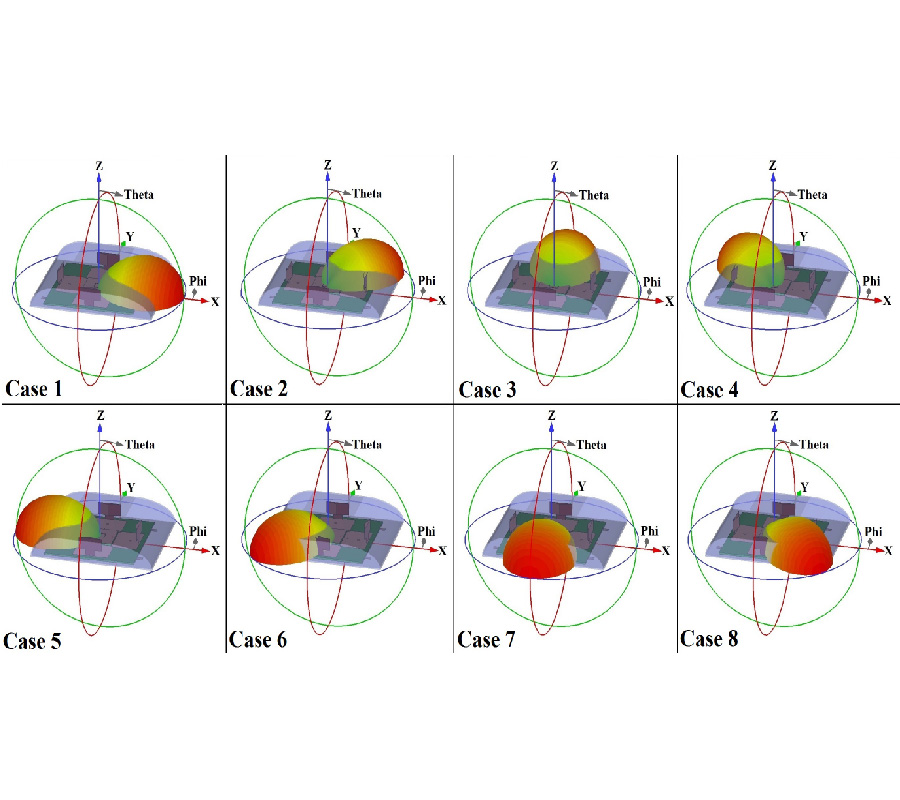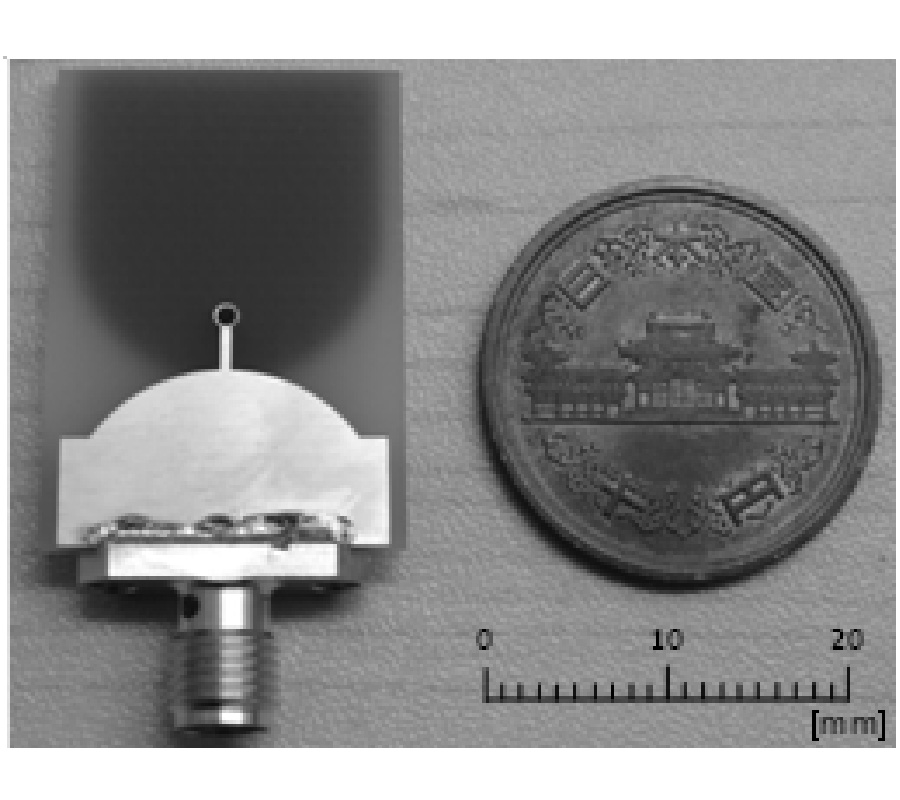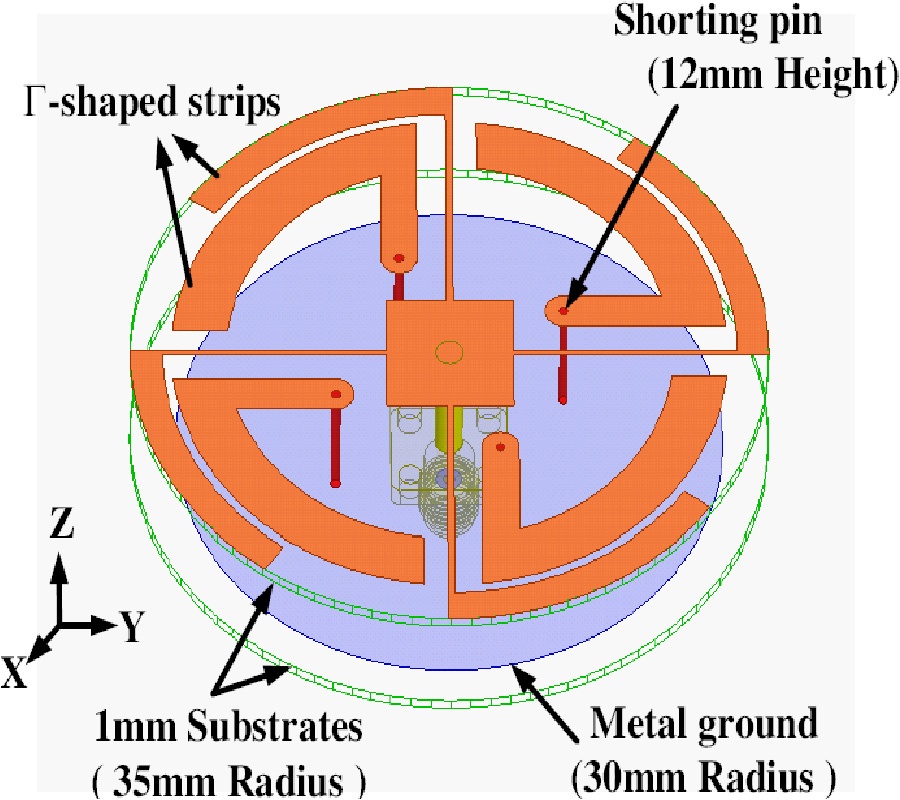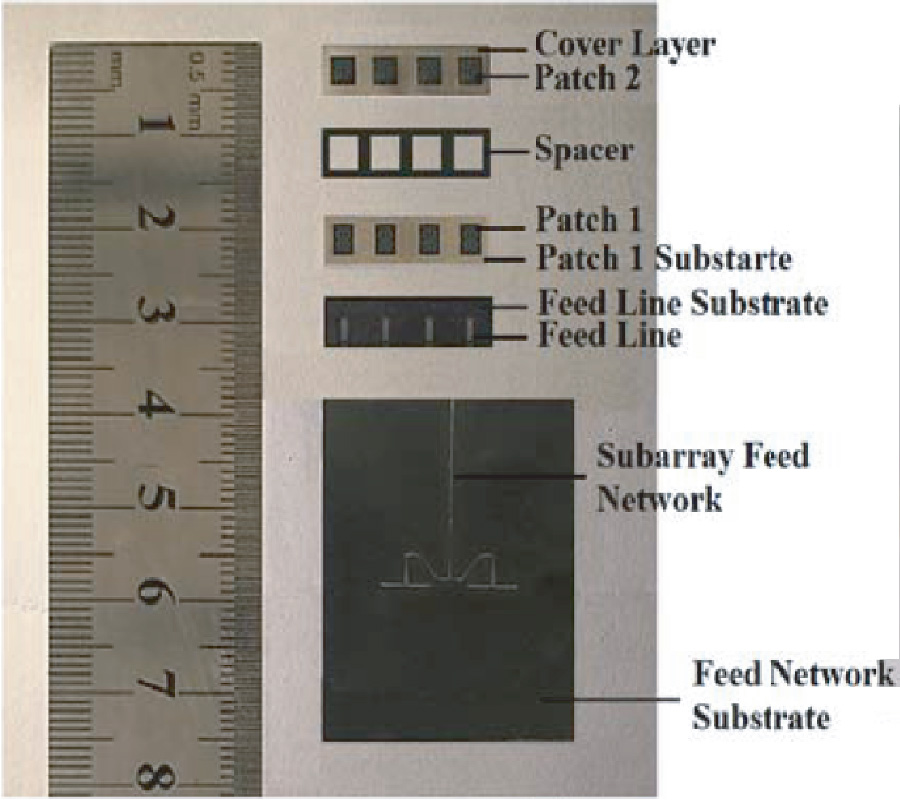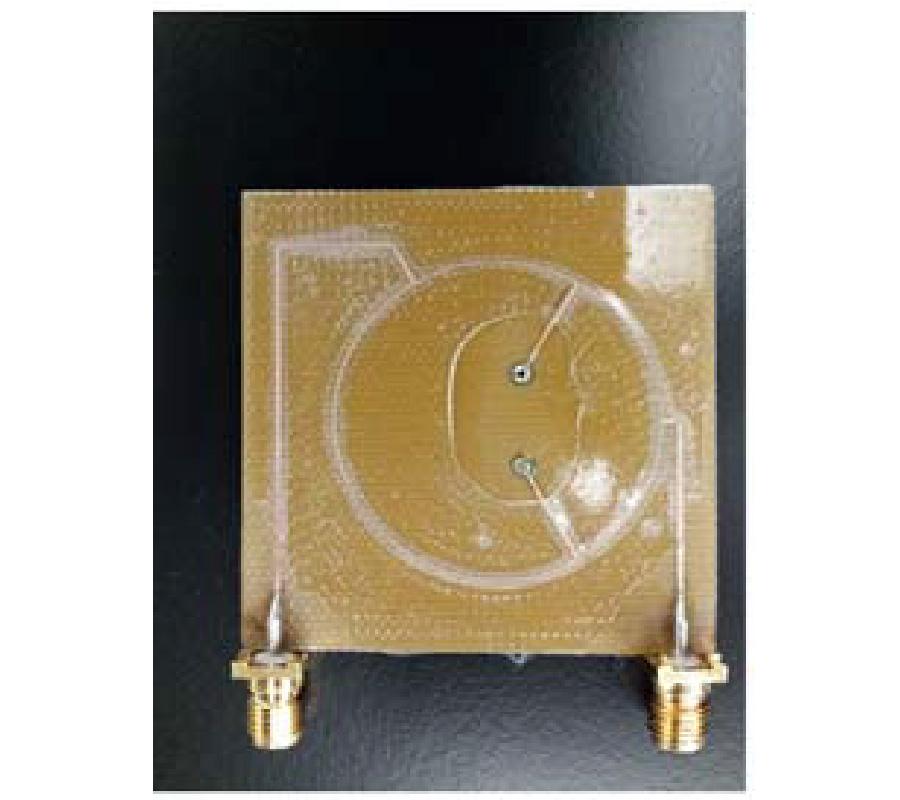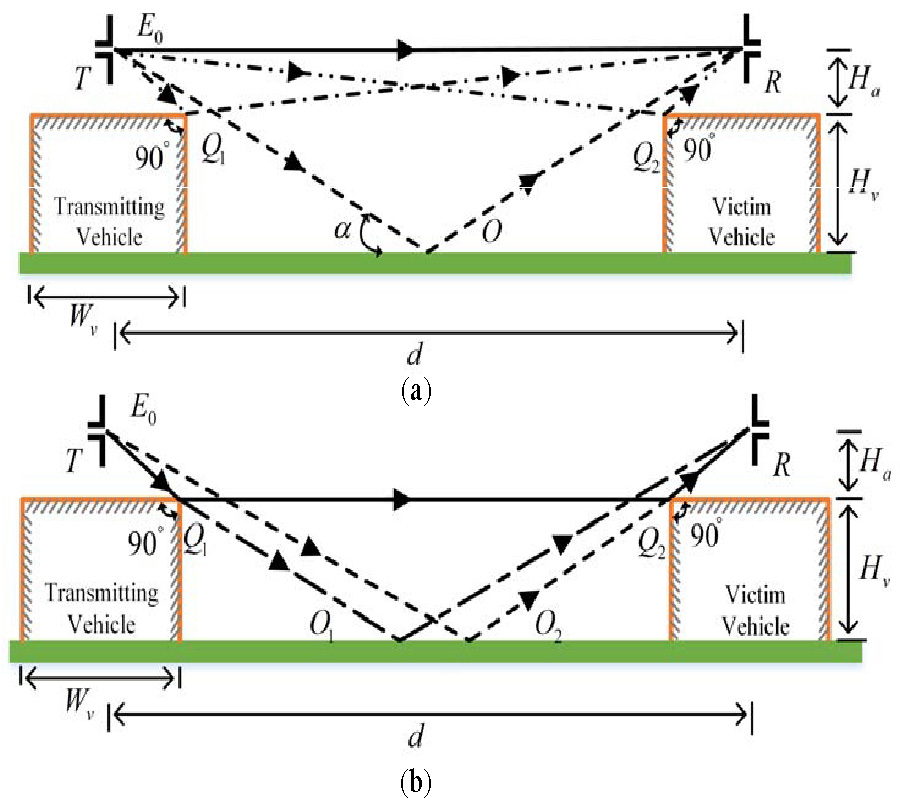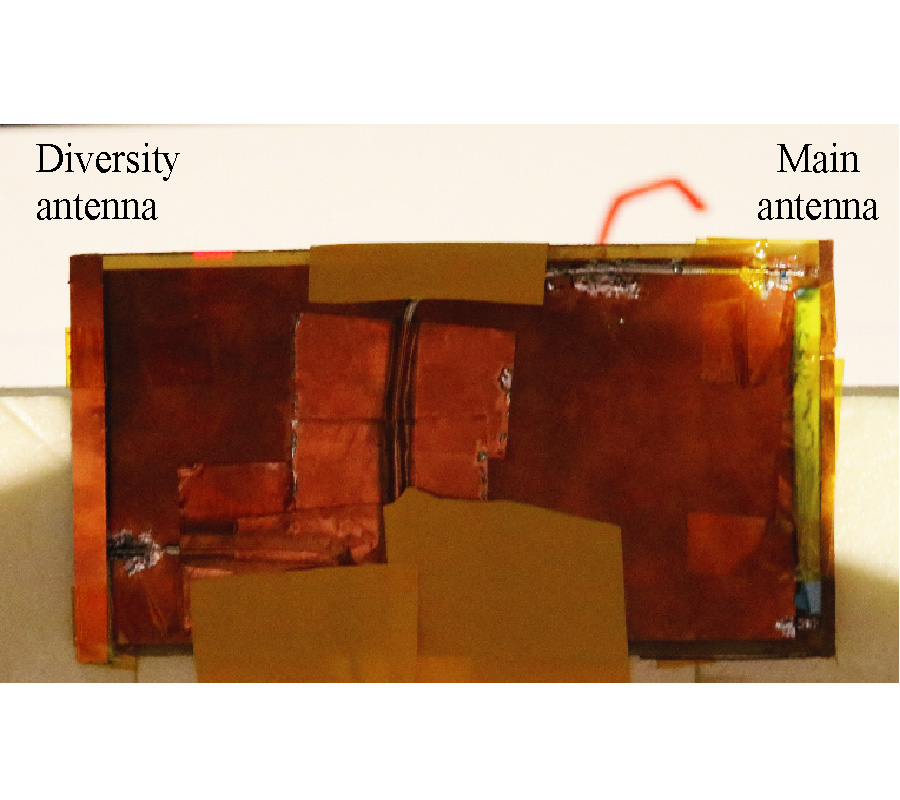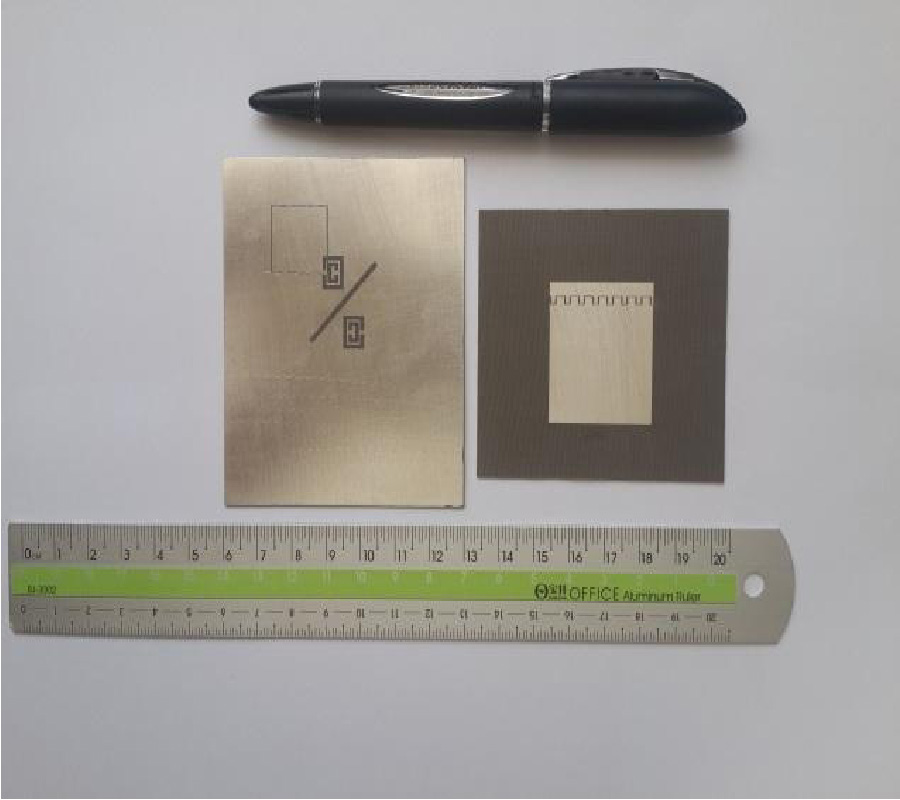Square-Shaped Fractal Antenna Under Metamaterial Loaded Condition for Bandwidth Enhancement
Pushkar Mishra,
Shaym Sunder Pattnaik and
Balwinder Singh Dhaliwal
In this paper, a metamaterial loaded square-shaped fractal antenna with two iterations is presented and discussed. A metamaterial loading consistsof split ring resonators (SRRs) which enhances the bandwidth of the antenna keeping the dimensions and size of the antenna same. The square-shaped fractal antenna, which is in the form of three concentric rings, was simulated and fabricated, and the results were shown and discussed. The antenna resonates at three distinct frequency bands 4.3719 GHz, 7.7437 GHz and 10.6374 GHz with the gains of 1.1974 dB, 4.2745 dB and 4.7233 dB, respectively for resonant frequencies. The bandwidths for the antenna are 185 MHz, 198 MHz and 386 MHz for distinct resonant frequencies. The antenna is fabricated using an FR-4 substrate, and the measured resonant frequencies are 4.08 GHz, 7.545 GHz and 10.24 GHz. In metamaterial loading condition, the dimension of the antenna resonates at 4.0105 GHz, 6.8474 GHz and 8.0632 GHz with bandwidths of 636 MHz, 347 MHz and 1.33 GHz at resonant frequencies. The appreciable bandwidth is achieved in such a small antenna without changing dimensions and size of the antenna. The simulated, experimental results and comparison are also presented in this paper.The results show that the proposed method can be used to design high bandwidth and compact fractal microstrip patch antennas without increasing dimensions.
